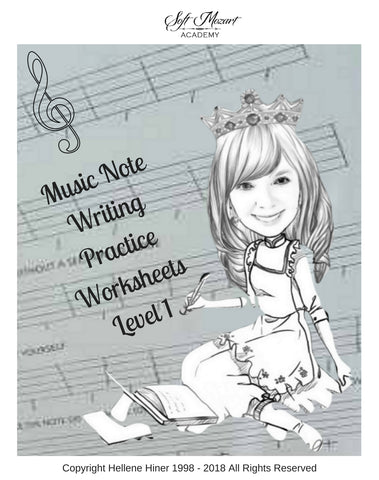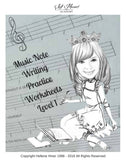Music Notes Writing Practice Worksheets 1
For writing notes of the First Octave.
The ability to write notes on paper is very important and useful when teaching music notation. Writing music notes helps students more deeply understand the relationships of sounds and notes. For children age 4 and up, work on the writing down music promotes better understanding and memorization of each note’s location on the lines and spaces of the Grand Staff.
In the Hiner method, we practice stenography from the very beginning. Our goal is to bring the child as close as possible to the peculiarities of the temporal nature of music. That's why we start writing notes not from circles, but from small dashes. Ideally, the child should learn how to sing solfeggio and write the same melody down simultaneously at a fairly confident pace.
These worksheets are designed for the initial stage of learning how to write the notes. They help develop the ability to accurately record each note in a range of 4 octaves both in order and randomly.
At first, students should trace the prewritten notation series, and then learn to write independently.
Particular attention in this kind of work should be given to the distance between notes. Later, when students are working on music dictations, this skill will help them not only capture notes quickly, but also arrange them rhythmically. If music notes are located too close to each other, it is difficult to grasp the text and work with it.
To hear and write down any new melody is a very important and useful skill that will be handy to every person throughout his life. To record music heard from outside--or to create your own compositions: all this greatly enriches each person and makes his perception of music more profound and meaningful.



